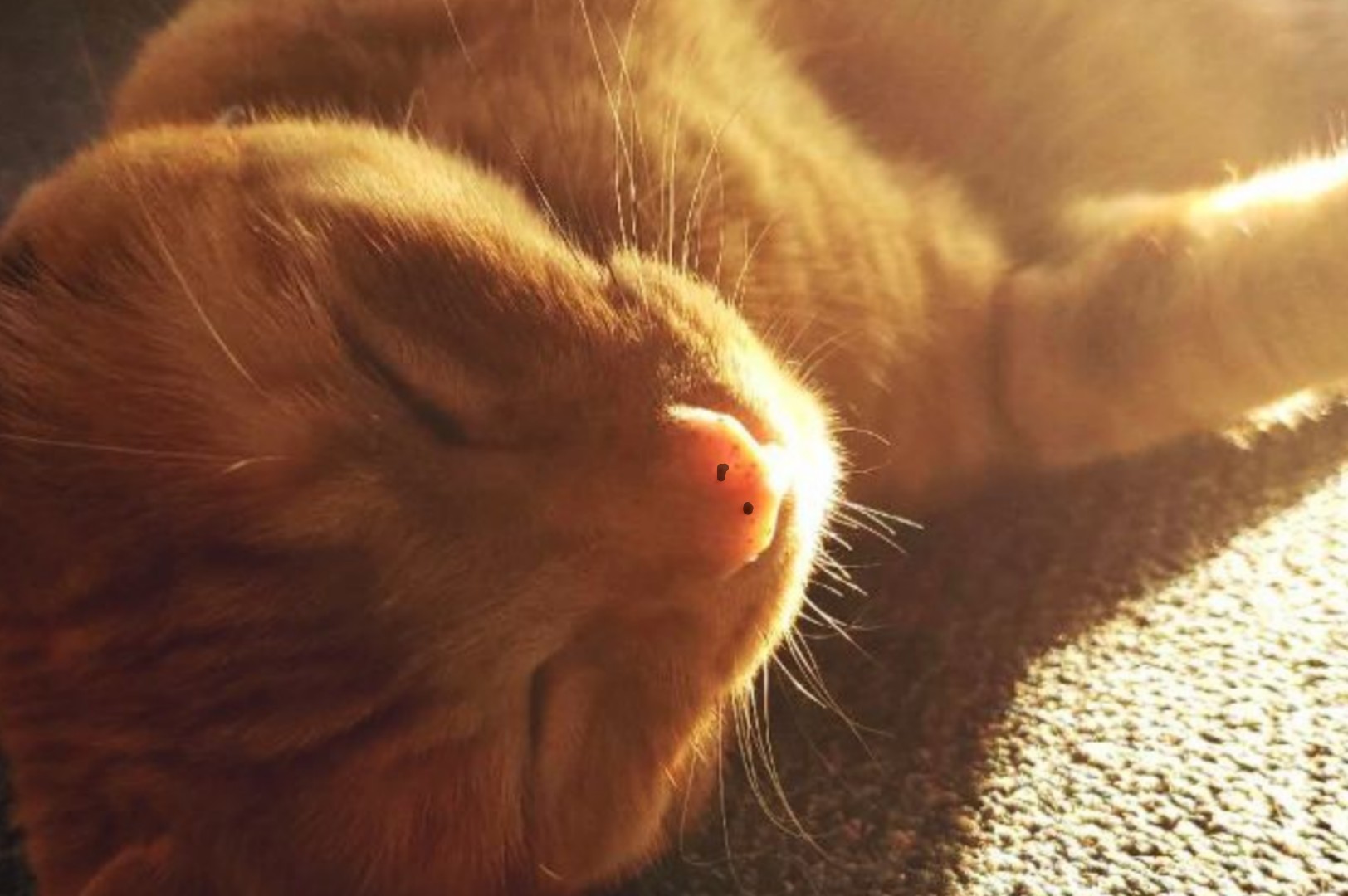Spots of lentigo may be noticed, especially in orange-colored cats, as the emergence of new spots on your cat is a cause for concern, but in general, the sudden appearance of black or brown spots of lentigo on the nose, lips, and eyelids of your orange cat is not much of a concern, and let's find out what these spots are Is it a cause for concern?
Why do black spots or lentigo appear in orange cats?
"lentigo" is the most common cause of black spots in cats, especially orange. As is known, it is an increase in pigment cells in the skin due to genetic factors, which leads to an increase in pigmentation and the appearance of black or brown spots on your cat's face.
lentigo appear on cats other than orange in color also, specifically in cats of adult to elderly ages, lentigo can appear in cats less than one year old.
lentigo signs in cats?
lentigo first appear in the form of small points in the lips and then spread to other areas such as the eyelids, gums and nose, with age, these points expand and grow to form wider spots, several points may combine to form a larger spot, this widening of the black points leads to the change of color of the affected area gradually to become lesions Brown or black, in addition to that, these lesions appear in the form of a raised flat with clear edges of small size, and no redness or change in the surrounding skin is noticed with no itching or irritation in the affected cats.
Causes of lentigo in cats
The incidence of lentigo or black spots in cats is of unknown cause. While exposure to the sun in humans is a cause of lentigo, this does not apply to cats, as the appearance of feline lentigo does not coincide with increased exposure to sunlight.
There is a genetic theory that has not been confirmed that believes that the reason for the appearance of these spots in orange cats is due to the instability and stability of the "inherited" gene responsible for the orange color and the predominance of the "inherited" gene other than the normal dark orange over time, which produces melanin pigment from cells producing the pigment or Melanocytes.
How is lentigo diagnosed and treated in cats?
Cats that show symptoms of lentigo are thoroughly examined with an examination to ensure the presence of other conditions such as melanoma, so samples are taken from the cats to be examined for cancer cells.
lentigo is not a cancerous tumor, but it may mask precancerous spots of melanoma, so regular checks should be made for this, as some raised spots tend to be more cancerous than flat spots.
lentigo is a benign neoplastic condition, and just like a human freckle, there is no need for treatment - simply enjoy your cat's freckle.
Other problems that appear similar to lentigo in cats?
lentigo cause black or brown spots to appear on cats, which are benign spots that are not worrisome. There are also some similar health problems that appear in the same way, including the following:
Fleas and flea dirt
They are blood-sucking parasites for feeding and appear as tiny black dots in your cat's fur and are difficult to detect unless you are an excellent cat breeder.
On the other hand, dirt and flea droppings that result from feeding on your cat's blood appear in the form of small black spots on the skin and fur of your pet cat.
Using a flea comb is the best way to diagnose a flea problem, as these special combs are designed to pull fleas, eggs and dirt out of your pet.
Feline acne
It is a common skin condition in cats, which appears in the form of black spots on the chin, which is of unknown cause. It develops into red, inflamed blisters that burst and release inflammatory materials, and good hygiene and cat care is important to treat, especially with regard to food and water dishes, avoid plastic dishes, And replace it with ceramics, stainless steel or glass.
skin cancer
Although it is less common in cats, the malignant form of melanoma, in which melanoma cells grow thickly, causes spots to form on your cat's skin in the mouth and eyes areas.
There are several characteristics that are common among cats with melanoma:
Melanoma may appear as a dark-colored spot, spot, lump, or raised area on the skin, gums, or inside the eyes. Common affected sites include the lips, gums, tongue, nose, ears, and eyes.
In the eyes, the first sign of melanoma may be a darker coloration of the iris.
Melanoma is aggressive, and it can spread rapidly to the lungs or liver, causing breathing difficulties, decreased appetite, and weight loss.
If you are concerned about a spot on your cat, especially if it changes size, swells, or becomes more tender, contact your veterinarian for an appointment. There is a high chance that the black spot on your cat is simply a freckle, but it is best for you to be safe from any health problems.

Comments
Post a Comment